基于Python高校图书馆图书管理系统的设计与实现(PyCharm,MySQL)(任务书,开题报告,论文14600字,程序代码,MySQL数据库)
摘要
随着时代和互联网的发展,高校师生们已经可以在网上浏览大量书籍,但是仍然有大量人群习惯于借阅传统书籍,并且随着受教育人数的增多,图书馆的工作在增加,管理难度也在不断增大,这时就需要一个功能齐全的、高效的图书管理系统来帮助图书馆管理人员。
高校图书馆图书管理系统作为一个典型的管理信息系统,本文从系统的前期调研和准备、系统分析、系统设计、系统实施、系统调试和测试等多个层次对系统进行阐述分析,介绍了系统开发的整个过程,描述了系统开发和论文撰写整个过程中的问题和解决措施。
本系统的开发运用了多种语言,系统的前端界面使用了html语言,后台管理界面使用了Python语言,数据库的搭建使用了MySQL数据库。系统最后实现了用户管理、图书管理、借阅管理、统计分析等模块,包括但不局限于用户的注册、密码修改、个人信息修改和浏览、图书的浏览、收藏、借阅和归还等功能。系统具有完备的功能,界面设计简洁,使用人员易于上手,可以帮助高校图书馆的工作人员减少劳动量,提高劳动效率,有利于高校图书馆的发展和高校整体水平的提升。
关键字:高校图书馆;管理信息系统;系统设计;系统分析
ABSTRACT
With the development of the times and the Internet, college teachers and students have been able to browse a large number of books online, but there are still a large number of people accustomed to borrowing traditional books, and with the increase in the number of educated students, the work of the library is increasing, and the management difficulty is also continue to grow, we need a fully functional and efficient library management system to help library managers.
As a typical management information system, the library management system of university library analyzes the system from the previous stages of system research and preparation, system analysis, system design, system implementation, system debugging and testing, and introduces system development. The whole process describes the problems and solutions in the whole process of system development and paper writing.
The development of this system uses a variety of languages, the front-end interface of the system uses the html language, the background management interface uses the Python language, and the database is built using the MySQL database. Finally, the system implements modules such as reader management, book management, loan management, and statistical analysis, including but not limited to reader registration, password modification, personal information modification and browsing, book browsing, collection, borrowing and returning functions. The system has complete functions, the interface design is simple, and the users are easy to get started. It can help the staff of the university library to reduce the labor and improve the labor efficiency, which is conducive to the development of the university library and the improvement of the overall level of the university.
Keywords:university library;management information system;system design;system analysis
需求分析
在以前,图书馆的信息管理往往采用手工登记信息,这样的话操作复杂并且数据存储麻烦。到了21世纪,随着信息化和互联网的发展,信息化管理已经是随处可见的东西。高校图书馆管理也需要与日俱进,需要利用信息化的管理系统来让自己的管理更加方便、服务更加快捷。并且随着高校招生人数的增多、各种专业文献、书籍的增多和图书馆机器的增多,高校图书馆的一系列工作也变得越来越繁重,所以高校图书馆也需要一个功能强大且使用方便的图书管理系统,这既是时代发展的要求也是面对现实问题的良好方法。
在高校图书馆的管理中,图书馆管理人员经常会遇到各种情况,所以对图书管理系统有较高的要求,结合实际情况考虑,该管理系统在实施后应能达到以下功能:
1)用户管理:用户可以进行注册、密码更改、注销、个人借阅图书查看、收藏图书等操作;
2)图书管理:图书管理需要管理员身份才能进行,管理员可以对图书进行浏览、查询、添加、删除、修改基本信息以及展示新书、图书推荐等操作;
3)借阅管理:用户可以进行图书查询、借阅图书、归还图书、收藏图书等操作;
4)统计分析:统计分析现有图书情况(包括已有数量、种类,借出数量、种类等)
技术是开发高校图书馆图书管理信息系统的主要困难,在开发过程中,开发人员的流动、开发进度的变更以及外部因素的营销都会对开发造成影响,所以系统采用了JetBrains PyCharm 2017作为开发平台,使用的是Python语言,后台数据库使用的是MySQL数据库。这些技术都是比较成熟的技术,在开发管理信息系统上以及被大量验证,所以开发高校图书馆图书管理信息系统在技术上是可行的。
开发软件及环境
前端开发:vs code
后端开发:JetBrains PyCharm 2017 x64,mysql 2017,Navicat Premium 12

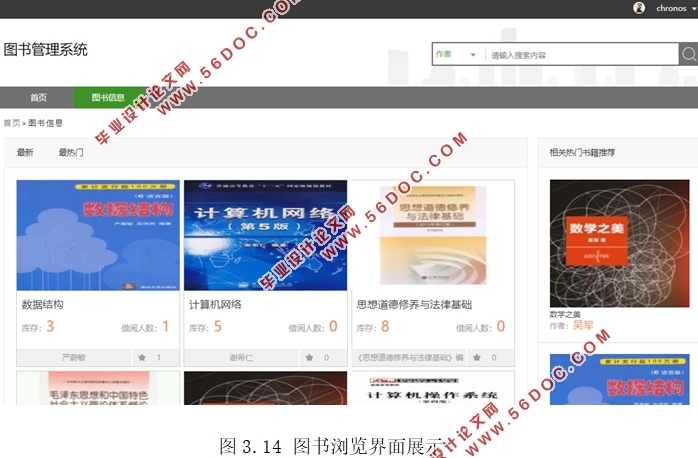
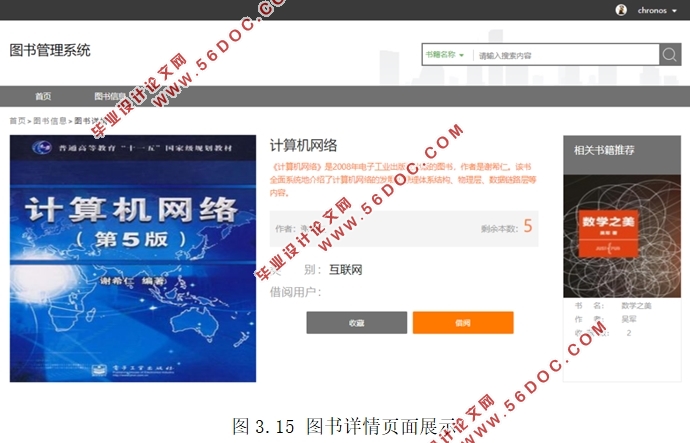
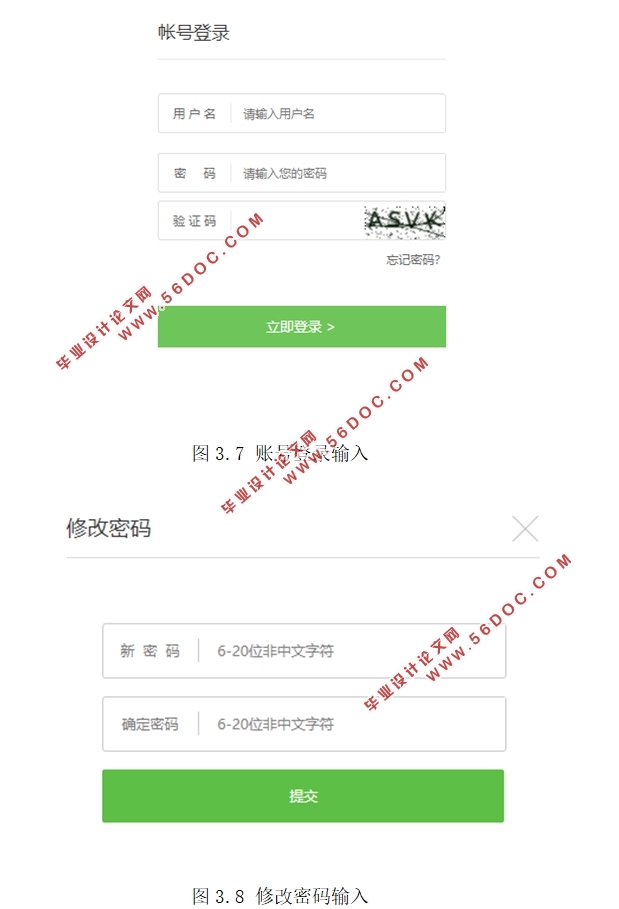
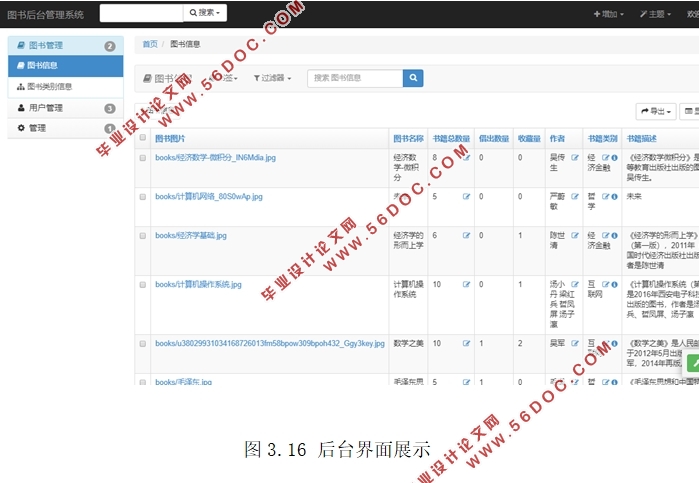
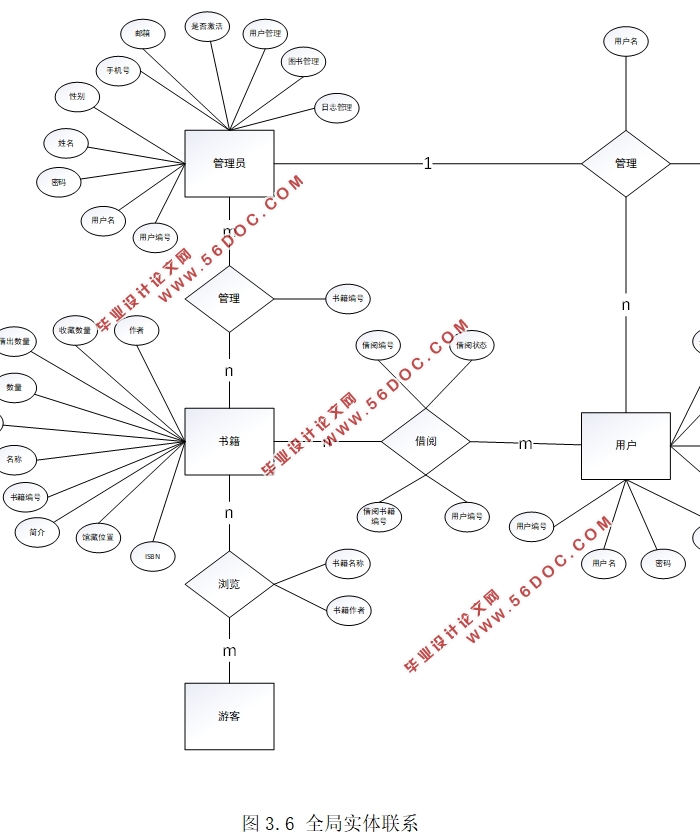
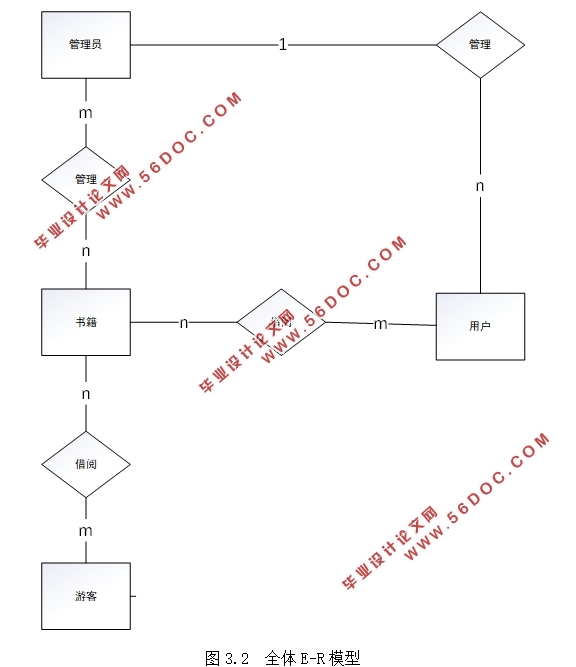
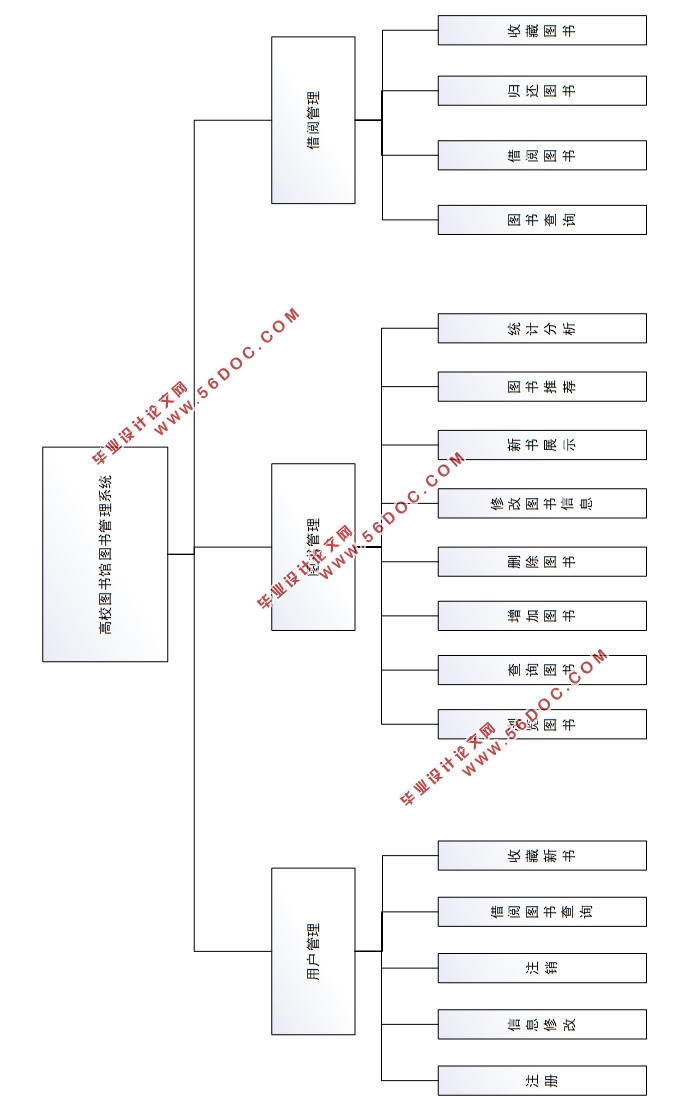
目录
1 绪论 1
1.1 高校图书馆图书管理系统开发目的 1
1.2 高校图书馆图书管理系统开发意义 1
1.3 国内外研究现状 2
1.4设计内容和设计方法 3
2 系统分析 5
2.1 需求分析 5
2.2 系统的可行性分析 5
2.3 业务流程分析 6
2.4 数据流程分析 8
2.5 数据字典 10
2.5.1 数据元素 10
2.5.2 数据流 11
2.5.3 数据存储 12
2.5.4 外部实体 13
2.5.5 处理过程 14
3 系统设计 16
3.1 总体结构设计 16
3.1.1 系统功能结构设计 16
3.1.2 系统物理配置方案设计 17
3.2 系统详细设计 17
3.2.1 数据库设计 17
3.2.2 编码设计 22
3.2.3 输入输出及界面设计 23
4 系统实施 28
4.1 开发环境与开发工具选择 28
4.2 系统调试 28
4.2.1 模拟运行系统 28
4.2.2 系统测试 34
结束语 38
参考文献 39
致谢 40
|

















